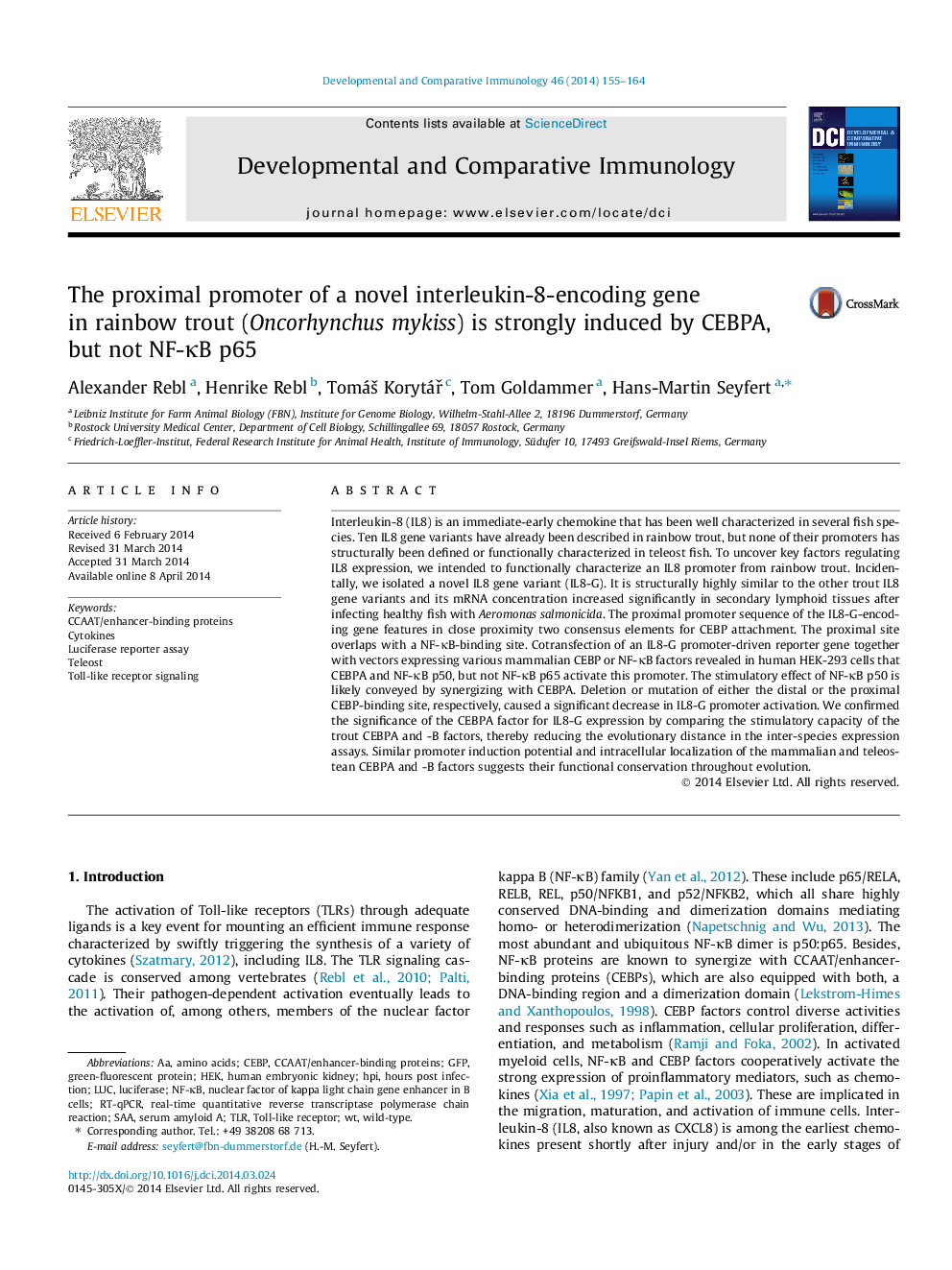| کد مقاله | کد نشریه | سال انتشار | مقاله انگلیسی | نسخه تمام متن |
|---|---|---|---|---|
| 2429129 | 1106479 | 2014 | 10 صفحه PDF | دانلود رایگان |

• We characterize a novel interleukin-8 gene variant (IL8-G) in rainbow trout.
• Infection increases IL8-G-encoding transcripts in secondary lymphoid tissues.
• CEBP and NF-κB binding sites in the IL-8-G promoter are functionally relevant.
• CEBPA is a strong inducer for this promoter and NF-κB p50 augments its efficacy.
• Trout and mammalian CEBPA and -B factors show the same intracellular distribution.
Interleukin-8 (IL8) is an immediate-early chemokine that has been well characterized in several fish species. Ten IL8 gene variants have already been described in rainbow trout, but none of their promoters has structurally been defined or functionally characterized in teleost fish. To uncover key factors regulating IL8 expression, we intended to functionally characterize an IL8 promoter from rainbow trout. Incidentally, we isolated a novel IL8 gene variant (IL8-G). It is structurally highly similar to the other trout IL8 gene variants and its mRNA concentration increased significantly in secondary lymphoid tissues after infecting healthy fish with Aeromonas salmonicida. The proximal promoter sequence of the IL8-G-encoding gene features in close proximity two consensus elements for CEBP attachment. The proximal site overlaps with a NF-κB-binding site. Cotransfection of an IL8-G promoter-driven reporter gene together with vectors expressing various mammalian CEBP or NF-κB factors revealed in human HEK-293 cells that CEBPA and NF-κB p50, but not NF-κB p65 activate this promoter. The stimulatory effect of NF-κB p50 is likely conveyed by synergizing with CEBPA. Deletion or mutation of either the distal or the proximal CEBP-binding site, respectively, caused a significant decrease in IL8-G promoter activation. We confirmed the significance of the CEBPA factor for IL8-G expression by comparing the stimulatory capacity of the trout CEBPA and -B factors, thereby reducing the evolutionary distance in the inter-species expression assays. Similar promoter induction potential and intracellular localization of the mammalian and teleostean CEBPA and -B factors suggests their functional conservation throughout evolution.
Figure optionsDownload high-quality image (150 K)Download as PowerPoint slide
Journal: Developmental & Comparative Immunology - Volume 46, Issue 2, October 2014, Pages 155–164